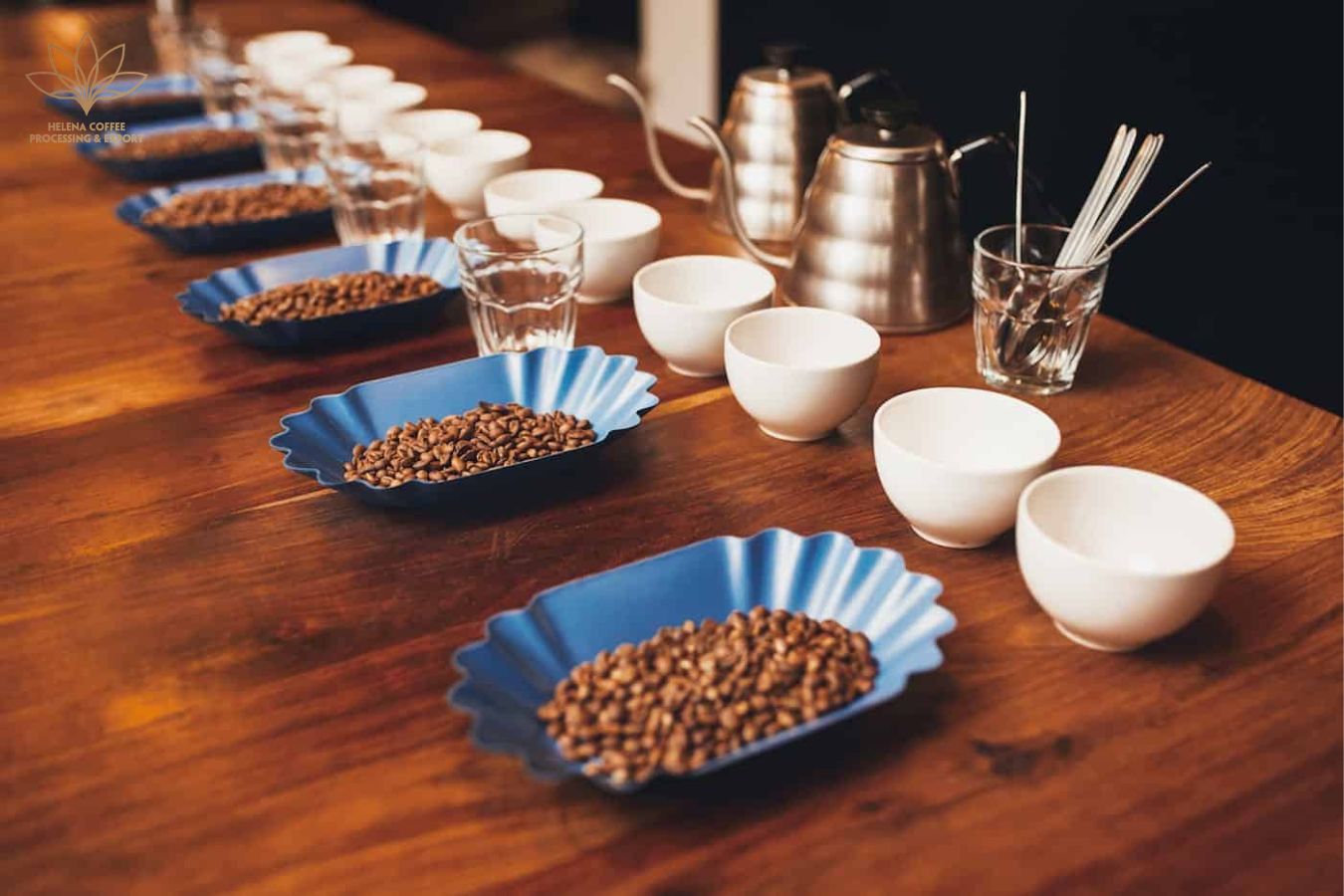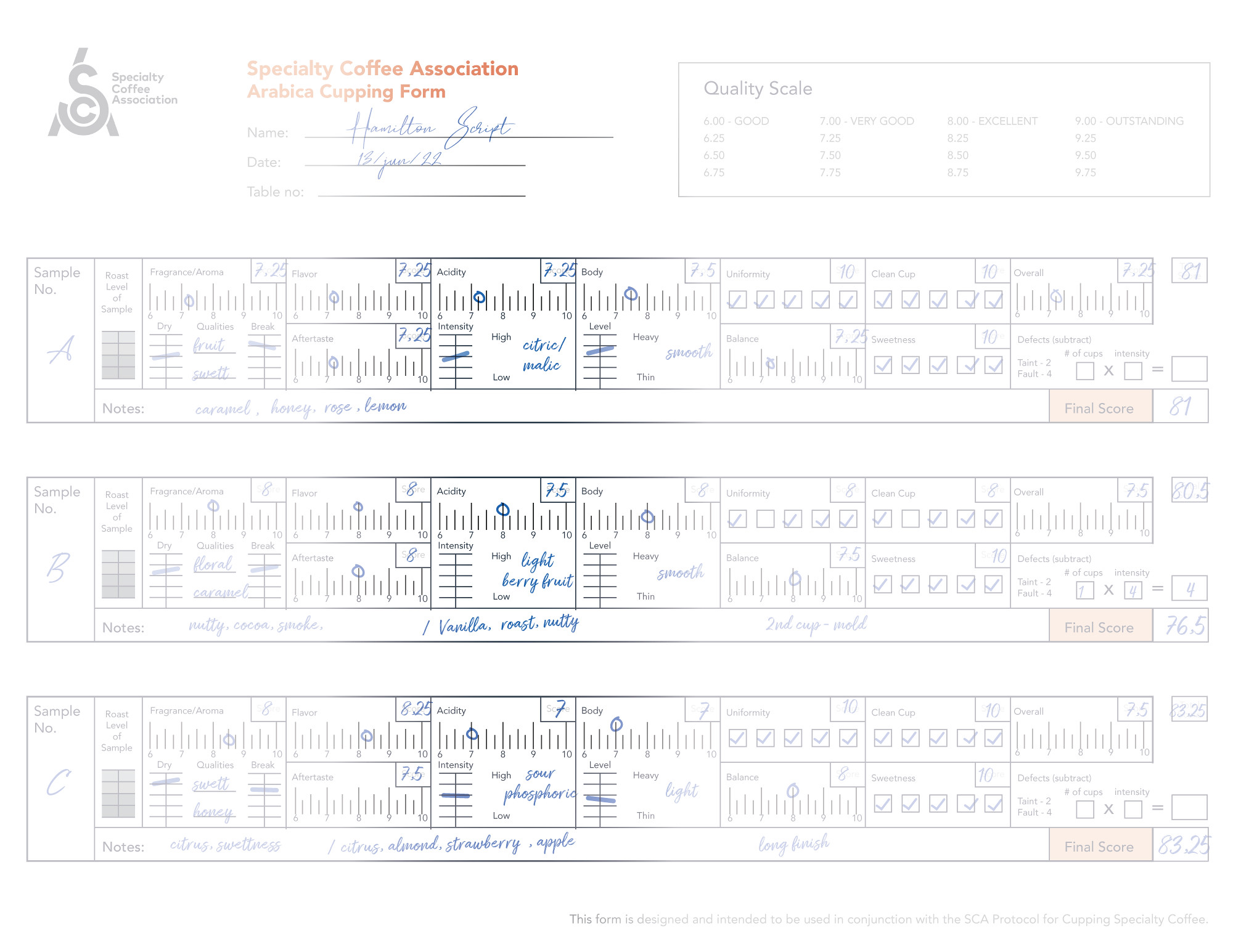
Acidity Properties – SCA Cupping Form – This article is part of a group of posts that explain the ten sensory attributes of the SCA Cupping Form (or SCA Arabica Cupping Form) based on knowledge from the book Sensory Science.
The intensity of acidity in coffee, objectively described by Cupper from low to high – on an intensity scale in cupping samples, is associated with the recognition of sensory impressions related to the characteristics of sourness.
It should be emphasized that this scale is only a descriptive activity and is not intended to convey anything about the preferences or quality of coffee.

The sour taste of coffee – it’s often misunderstood!
We can think of something sour, harsh, and relatively unpleasant, such as lemon juice, pure vinegar, etc. But in coffee, acidity or “acidity” is often desirable.
The acid solution has a pH of less than seven; the lower the pH, the higher the acidity (for example, orange juice has a pH of ≈ 3, and saliva has a pH of ≈ 6.5).
Therefore, this is contradictory when we say that you should not consider the acid in coffee as a sour taste and assign it to the pH scale.
However, experts compare coffee’s sourness to a particular fruit implying that its sourness is almost identical to the sourness caused by the primary acid in that fruit.
Green apples contain mainly malic acid (with pH≈3), while lemons contain more citric acid (pH≈1). Thus, since apples are less acidic than lemons, coffee with “apple acidity” will be less acidic than coffee with “lemon acidity.”
There are many reasons why the same “sour” attribute causes different levels of sensation in coffee:
- Some volatile acids (e.g., formic acid and acetic acid) can simultaneously stimulate the sense of smell along with taste.
- Other acids, such as quinic acid, have a certain astringency or bitterness in addition to sourness (due to their molecular structure).
- The strength of an acid can give different sensory characteristics; depending on whether it is a weak or strong acid, it will be perceived through different receptor pathways in the taste buds.
In addition, the strength of the coffee is measured by the “total dissolved solids”; in other words, the darker the coffee, the more dissolved substances will have more acid and cause a sharp sour taste.
Rating of sourness in cupping
Sometimes, the Cupper may note a detailed description regarding the acidity of coffee: citric acid, tartaric acid, or malic acid, for example.
Again, standard attribute descriptions in the Coffee Flavor Circle or flavor dictionary should be preferred. If the taste is negative, it can be called “harsh, tart,” and the buoyant acidity gives the fruit a “bright, lively” feeling.

Next, the Cupper will evaluate the quality of the acidity of the coffee by recording a score on a horizontal scale (6 to 10 points).
This score is intended to evaluate the quality of coffee along with the type of acidity based on an estimate of its value in the market. In addition, there are some caveats when assessing the edge of coffee, as follows:
- The fruity properties of coffee (if any) are almost immediately
experienced and evaluated when coffee is exposed to the mouth for the first time (they are the molecules with the most straightforward and lightest structure). - Unlike other organic acids, acetic acid contributes to an aroma and a sour taste when present in sufficient amounts. However, too high levels of acetic acid can be very harmful.
- Acidity may not correlate with quality scores. In other words, a coffee from Kenya with high acidity and a coffee
from Sumatra, with a low edge, can still get the same quality score for their advantage.
NOTE: We only work in the 6 to 10 range to score each attribute on the cupping form, including Fragrance/Aroma. Why not 5? Since six is considered “good” and, in other words, it is of above-average quality, if coffee has shown poor quality in any attribute, it is not considered a specialty (Specialty Coffee)
References:
- Primecoffea, Thuộc tính Acidity • SCA Cupping Form, Tháng Một 29, 2023.